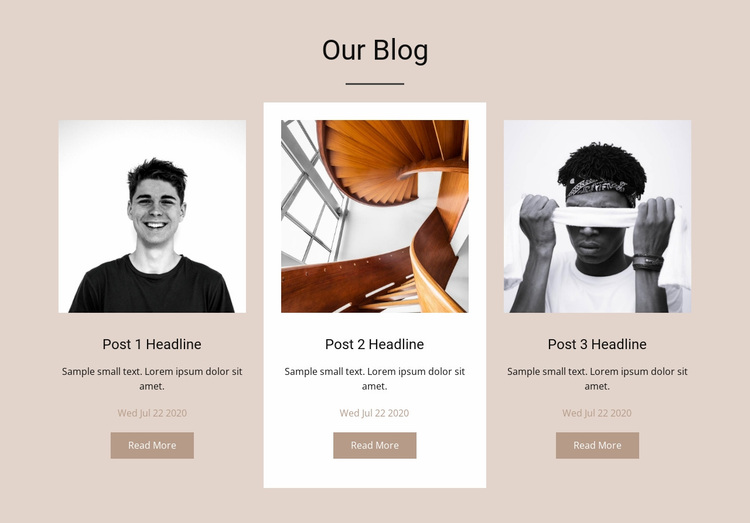Top Tips for Creating an Impactful Website Style That Transforms
To accomplish this, one should take into consideration a selection of elements, consisting of understanding the target audience, focusing on customer experience, and enhancing for mobile systems. The tactical usage of engaging call-to-actions and a distinct aesthetic hierarchy plays a vital duty in leading customers with their journey.

Understand Your Target Audience
Recognizing your target audience is fundamental to efficient site style, as it prepares for creating an appealing customer experience. Identifying who your users are, including their demographics, preferences, and behaviors, allows developers to tailor the site's material, design, and performance to satisfy details needs.
Carrying out extensive market study is vital in this procedure. Studies, meetings, and analytics can offer important understandings into user assumptions and pain factors. By assembling this information, developers can create individual characters that stand for various sections of the audience, making sure that style choices are educated and appropriate.
Furthermore, recognizing the target audience assists in picking ideal style elements such as color pattern, typography, and images that resonate with customers. A site that talks straight to its audience promotes a feeling of link and trust fund, urging longer visits and higher conversion prices.
Eventually, a user-centered technique to site layout not just improves customer satisfaction however additionally sustains organization objectives by driving engagement and loyalty. By prioritizing the needs and preferences of the target market, a website can successfully offer its purpose and achieve preferred end results.
Prioritize Individual Experience
To improve the total performance of an internet site, prioritizing individual experience (UX) is essential (Website Design). A well-designed UX makes certain that visitors can browse the website easily, locate info rapidly, and involve with content meaningfully. This leads to raised user fulfillment and higher conversion rates
Begin by executing user-friendly navigating. Menus ought to be logically structured, enabling users to locate essential areas of the site with minimal effort. Consistency in design elements, such as shade plans and font styles, cultivates experience, which is crucial for preserving individual engagement.
In addition, take into consideration the filling rate of your web site. A delay of just a few secs can result in significant drop-offs, as users are much less likely to wait for a slow-loading web page. Simplifying images and maximizing code can boost performance and retain site visitors.
Additionally, clarity in content presentation is essential. Usage concise, appealing language and separate text with visuals to improve readability. By prioritizing customer experience, you not just produce an extra satisfying setting for site visitors yet also reinforce your brand name's credibility. Eventually, an emphasis on UX is an investment in the long-term success of your web site.
Maximize for Mobile Devices
Maximizing for mobile phones is critical in today's electronic landscape, where an enhancing number of users access web sites with mobile phones and tablet computers. A mobile-friendly design not just enhances user experience but also plays a substantial role in enhancing search engine rankings. To her latest blog achieve this, it is necessary to embrace a responsive layout that immediately changes to numerous screen dimensions and orientations.

Filling speed is one more vital variable; mobile individuals are generally much less patient and expect rapid access to information. Optimize pictures and take advantage of web browser caching to enhance efficiency. Finally, examination your web site on multiple devices top article and display resolutions to identify and remedy any kind of potential use issues. By prioritizing mobile optimization, you guarantee that your website continues to be affordable and properly engages a broader audience.
Usage Compelling Call-to-Actions
An internet site's performance commonly rests on its ability to guide visitors towards wanted actions, making compelling call-to-actions (CTAs) important parts of design. CTAs act as the crucial points that guide users to involve with the website, whether that indicates buying, signing up for a newsletter, or downloading a resource.
To develop reliable CTAs, clearness is critical. Usage succinct language that plainly connects the activity you want the customer to take. Phrases such as "Start," "Sign Up Free," or "Shop Now" not just communicate seriousness but likewise get rid of uncertainty. The placement of CTAs is just as vital; they ought to be purposefully placed throughout the website to guarantee they are conveniently visible, particularly in high-traffic areas.
Additionally, consider making use of directional hints, such as arrowheads or pictures, to guide individuals toward these buttons. By focusing on these elements, services can substantially boost user involvement, driving conversions and ultimately attaining their internet site's objectives.
Concentrate On Visual Power Structure
Reliable site design depends greatly on a well-structured visual power structure that overviews individuals with web content effortlessly. By organizing aspects in a manner that prioritizes info, developers can improve individual experience and help with decision-making. This includes using dimension, shade, contrast, and spacing tactically to attract attention to the most crucial elements of a web page.
Making use of bigger typefaces for headings and subheadings establishes a clear difference address in between various sections, permitting individuals to scan content effortlessly. Additionally, utilizing contrasting shades for buttons and calls-to-action can catch individual focus and encourage interaction. Whitespace is one more important component; it avoids mess and makes it possible for users to concentrate on essential messages without distractions.
Images and graphics should complement the message while additionally adhering to the well-known power structure, reinforcing the total message (Website Design). Uniformity in style components, such as color pattern and typography, further reinforces the aesthetic hierarchy, making navigating intuitive

Conclusion
Finally, reliable internet site style requires a thorough understanding of the target audience, prioritization of user experience, and mobile optimization. The critical use engaging call-to-actions and a well-defined visual hierarchy even more boosts user engagement. By executing these principles, internet sites can accomplish greater conversion rates, guaranteeing that layout elements not only bring in visitors yet additionally facilitate smooth navigation and interaction. Eventually, a well-executed site design acts as a critical element in driving individual activities and achieving company objectives.